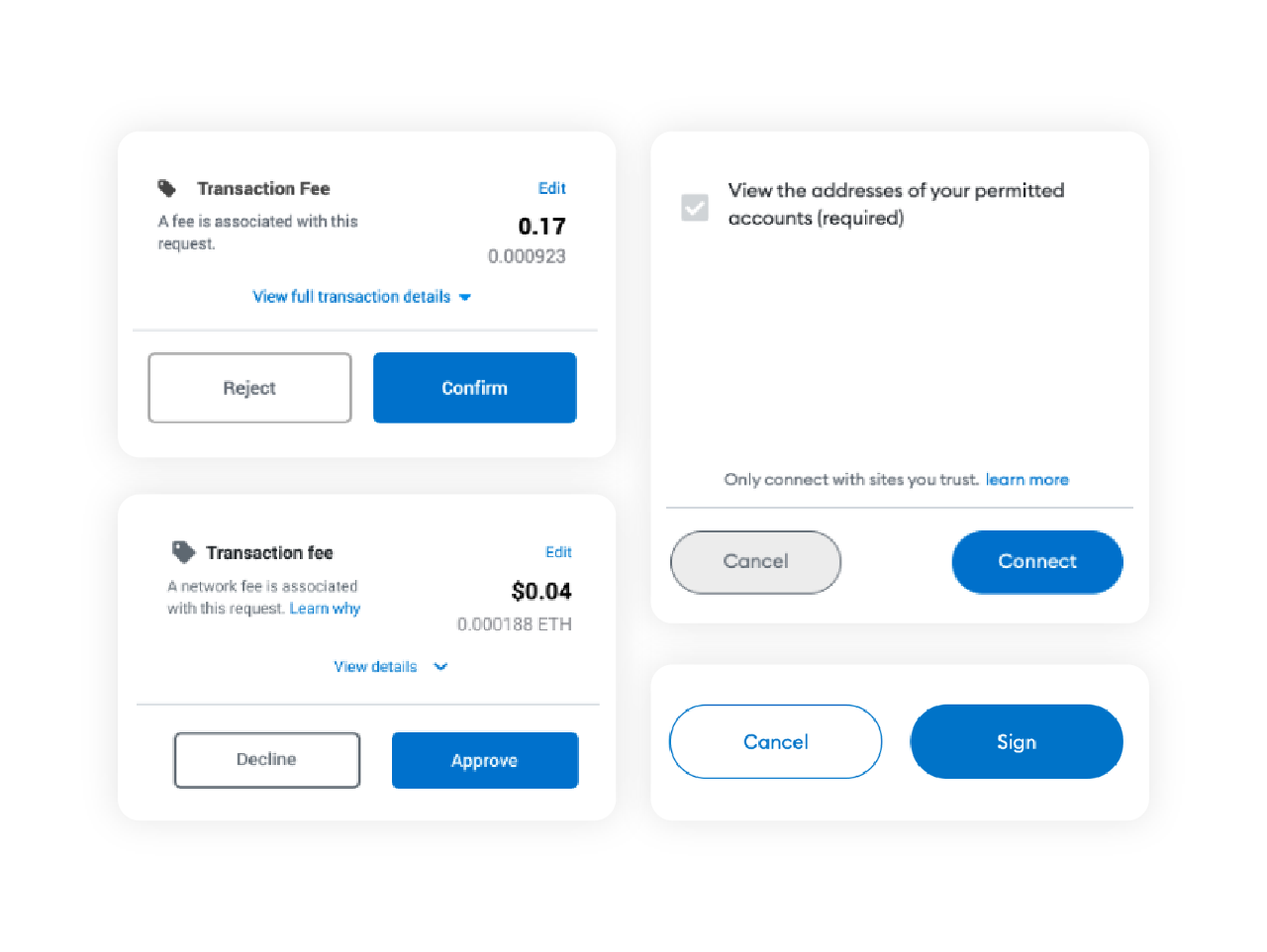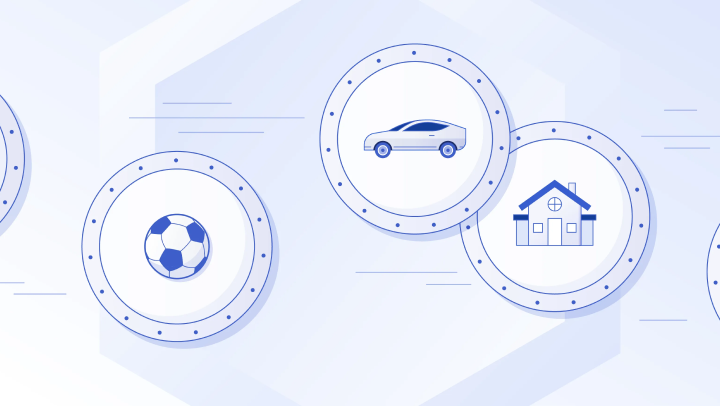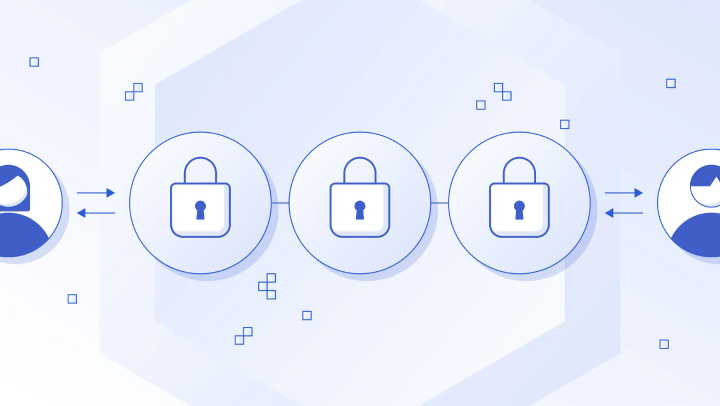What Are Blockchain Games?
A blockchain game is any game that uses blockchain technology to enhance or rearchitect traditional video games.
The natural synergy between video games and Web3 is readily apparent. Both are natively digital, leverage forms of digital items and currencies, and have implicit or explicit aspects of gamification built into them. But Web3 is not a game, though games can be built on top of it. Most of today’s in-game items and currencies are not crypto tokens, though they can be.
Read on to learn how blockchain technology can enhance the gaming experience.
The point of blockchain games, no matter the genre they come from, is to redefine the relationship between players and game creators to be fairer and more transparent. That said, there are varying degrees to which blockchain technology can be implemented within video games.
How Does Crypto Gaming Work?
A good way to understand how blockchain gaming works and the benefits of blockchain games is by looking at the novel tools available to crypto gaming developers. Specifically, crypto wallets, smart contracts, and blockchain tokens.
Note: All of these things are built on top of blockchains.
Wallets as Universal Player Identities
A hallmark of traditional gaming systems (and non-blockchain software in general) is the gated login system. Gamers have separate identities for each closed gaming ecosystem they’re a part of. They have a Steam account, an Epic account, a Riot Games account, and so on and so forth.
While many gamers view this as an inevitable reality of today’s gaming world, crypto wallets provide an alternative for crypto gamers. If blockchains and the games built on top of them are natively digital worlds, blockchains wallets are a universal entry pass—gamers need only create one wallet to access all games.
Note: Current limitations exist with this universal pass model due to connectivity problems between multiple blockchain ecosystems. More on this later.

Smart Contracts as Core Code
Smart contracts are the backbone of all blockchain applications. They are automatically executed in a deterministic manner, giving gamers a trust-minimized guarantee that the part of the game outlined in these contracts will run as codified every single time.
While the end goal might be to have all game logic run through smart contracts, it’s important to note that most blockchain games today work via a hybrid architecture that leverages both on-chain code (smart contracts) and off-chain code due to speed and scalability limitations. Today, smart contracts in blockchain games for the most part help facilitate the creation and movement of in-game items and currencies, but they can also be used to secure crucial in-game functions, like determining the outcome of a particular round or match of a game.
Tokens as Digital Items and Currency
Digital currencies and items are a common staple of online video games. They’re dropped by defeated bosses, earned by completing quests, rewarded for playing games, and purchased in exchange for cosmetic items, just to name a few use cases. Blockchain tokens serve the same purpose, whether fungible (think Runescape “gp”) or non-fungible (in-game items).
Today, in-game currencies and items are typically stored and distributed by a game’s publisher on a proprietary backend server. They control what players can do with their digital assets, deciding who owns them and how they can use them. That’s not the case with blockchain games.
In-game assets underpinned by blockchain tokens set a new standard for digital asset ownership. When an in-game item is an NFT, the player owns it. It can’t be taken away or erased, and there are ways to do what anyone should be able to do with something that’s theirs—like sell it, trade it, and buy things with it—without a game developer’s explicit permission.

A counterargument to the widespread implementation of in-game blockchain tokens is that game publishers can still make an asset worthless by removing its utility from the game. This is true. But making tokens the de facto standard within games flips the status quo of digital ownership. Before blockchains, ownership was a gift—a decision considered and approved by the game’s publisher. With blockchain games, it is a fundamental right that must be deliberately taken away.
Tokens as a Medium for Player Governance.
Tokens don’t just represent in-game currencies and items. Tokens can also be used to coordinate the activity of decentralized autonomous organizations (DAOs) and ascribe membership and governance rights to players.
The core concept of a DAO token, regardless of implementation, can be summarized into three elements:
- Tokens are distributed to players based on arbitrary criteria. This can range from completing certain actions to data points that showcase a player’s dedication to the game (e.g., finishing an event or spending a certain amount of time playing a game).
- Tokens are given a certain vote weight. Whether it’s one vote per token, one vote per player, or another governance design, tokens effectively act as a medium for players to vote.
- Tokens are used to vote on proposals. Proposals have customizable boundaries in scope (i.e., what is able to be changed) and participation (i.e., who is able to propose something, or even who is able to vote on what).

Token voting empowers players to have a say in the game’s direction—a powerful tool for inspiring player evangelism, pushing forward the correct game design decisions, and outsourcing specific elements of game development.
The key question to answer with DAO tokens is how to maximize efficiency in game development and maintain a cohesive creative direction while still enabling player participation to its fullest. For example, a system in which players collectively vote on gameplay balance or full-scope update specifications in multiplayer online games is unlikely to work. Specialized game analysts and developers with deep insight into the state of a game are best suited for this job. Cosmetic decisions like skin design make more sense. Any player can design, propose, and vote on skin concepts, which has the added benefit of ensuring latent demand—a win-win for game designers and players alike.
Game governance through tokens is a wide-open design space that hasn’t been explored to its fullest, meaning there’s unbridled potential for innovation. Game publishers should strive to leverage this emerging technology to give players the ability to shape the outcomes of the games they care about.
Technical Limitations in Blockchain Games
There are certain limitations and challenges to building a blockchain game today that must be solved before games can truly reach the standard that mainstream gamers expect.
Barriers to Entry
Historically, blockchain games have worse player experiences compared to traditional games due to the nascent state of the underlying blockchain infrastructure. Gamers often have to set up a third-party wallet and fund it with enough network tokens to pay transaction fees simply to get started playing. Any in-game mechanism that requires a transaction also requires players to sign transactions separately, a key hurdle that breaks gameplay immersion and introduces small, but detrimental, barriers to achieving a seamless user experience.

Scalability and Game Lag
While the end goal is for blockchain games to be fully on-chain as a series of smart contracts, existing blockchain scalability limitations make it difficult to build a blockchain game through this method because video games often have computation and latency requirements that blockchains today can’t handle. If a computation-intensive blockchain game was built completely on a blockchain today, it’s likely that gamers would experience game lag—one of the most frustrating problems for gamers.

Connectivity and Disconnected Ecosystems
The blockchain ecosystem is fragmented across a wide range of disconnected layer-1 and layer-2 environments. While blockchains act as a universal and shared backend for all the games built on top of them, there is still a disconnect between an Ethereum game and a Solana game. Players must use different wallets, and there are limited options to bridge messages from one blockchain to another.
This problem is similar to the fragmentation in traditional gaming ecosystems in many ways, as typified by the example of having to make Steam, Epic, and Riot accounts to play games from these publishers. But the root of the problem is different. In traditional games, there is an incentive to create closed systems. Blockchain games are intrinsically more open. There is simply a lack of robust cross-chain infrastructure, although many teams are currently working on building this.

Emerging Solutions to Blockchain Game Limitations
Despite these limitations and challenges, blockchain games are only improving. Technical challenges are actively being solved, and the infrastructure to handle next-gen blockchain games is on the horizon.
Wallet Account Abstraction
In a nutshell, wallet account abstraction unlocks a player’s wallet experience by eliminating the need to constantly sign transactions, and in certain cases, removing transaction fees if the application itself chooses to cover them. This is most useful for the movement of digital assets, which always requires a blockchain transaction on the player’s end.
The end goal: Removing the backend wallet barriers that make players conscious that they’re using blockchain technology.
Blockchain and Layer-2 Scalability
Advancements in blockchain scalability as well as the emergence of layer-2 environments help remove the computational barriers to providing a high-throughput Web3 game. This effectively means that gamers no longer have to deal with long-term network congestion and high network fees, both of which significantly impact the player experience.
Blockchain Oracles
Chainlink, the industry-leading blockchain oracle, provides a range of development services that make Web3 games more efficient, transparent, and seamless. Chainlink infrastructure enables blockchains, wallets, and smart contracts to accomplish the tasks that they are natively incapable of doing—making blockchain games more interoperable, transparent, and rewarding in the process.
Cross-Chain Interoperability
The Cross-Chain Interoperability Protocol (CCIP) is an in-development, open-source framework for enabling blockchains and layer-2 environments to communicate with each other. This is the final piece that unlocks a universal environment for blockchain games.
Digital assets can be transported seamlessly from one blockchain to another, player identity and logins can be all-encompassing regardless of the blockchain in use, and cross-chain smart contracts enable game publishers to leverage each blockchain for their individual strengths (i.e., scalability, data storage, security, decentralization, etc.)

Verifiable Randomness
Chainlink Verifiable Random Function (VRF) serves blockchain games with an auditable form of randomness. An analog parallel to VRF: Imagine you’re playing craps, and there’s a machine that checks the dice for its weight and balance to make sure the game isn’t rigged.
That’s exactly what Chainlink VRF does. Blockchain games can leverage Chainlink VRF directly inside smart contracts to give their players a unique Web3 guarantee of transparency and fairness. Whether it’s the chance of a critical hit, a loot box reveal, or any other randomness-needing game function, VRF provides a novel randomness standard for blockchain game developers.

Automation
Smart contract automation is necessary to improve the crypto gaming experience. Without it, players are forced to step out of the game, manually sign a transaction, and pay a fee just to continue the game. In some blockchain games, players have to trigger the start and end of a game, and then pay transaction fees just to claim their rewards. These are mundane tasks that break gameplay immersion and result in subpar player experiences.
This lack of automation is a fundamental limitation for developers implementing smart contracts to power core, or even side, gameplay. Chainlink Automation solves this by enabling game developers to autonomously execute transactions that update the game state on behalf of players—the minimum standard for any game to break through into the mainstream.
Blockchain Gaming: Connectivity, Ownership, and Empowerment
Connectivity, ownership, and empowerment. This is what blockchain technology and Web3 at large offer to an increasingly digital world. In function, blockchain games serve the same role as any other game. Players fall in love with a game for different reasons, from the friends they make and the achievements they strive for to the immersive worlds they’re able to explore.
The core premise of crypto gaming is that these experiences can be made better. With Web3, we can create larger and more connected digital worlds, empower players with sovereign ownership over their achievements, and provide players with the opportunity to meaningfully contribute to the games that they’ve put hours upon hours of their time, dedication, and effort into.













